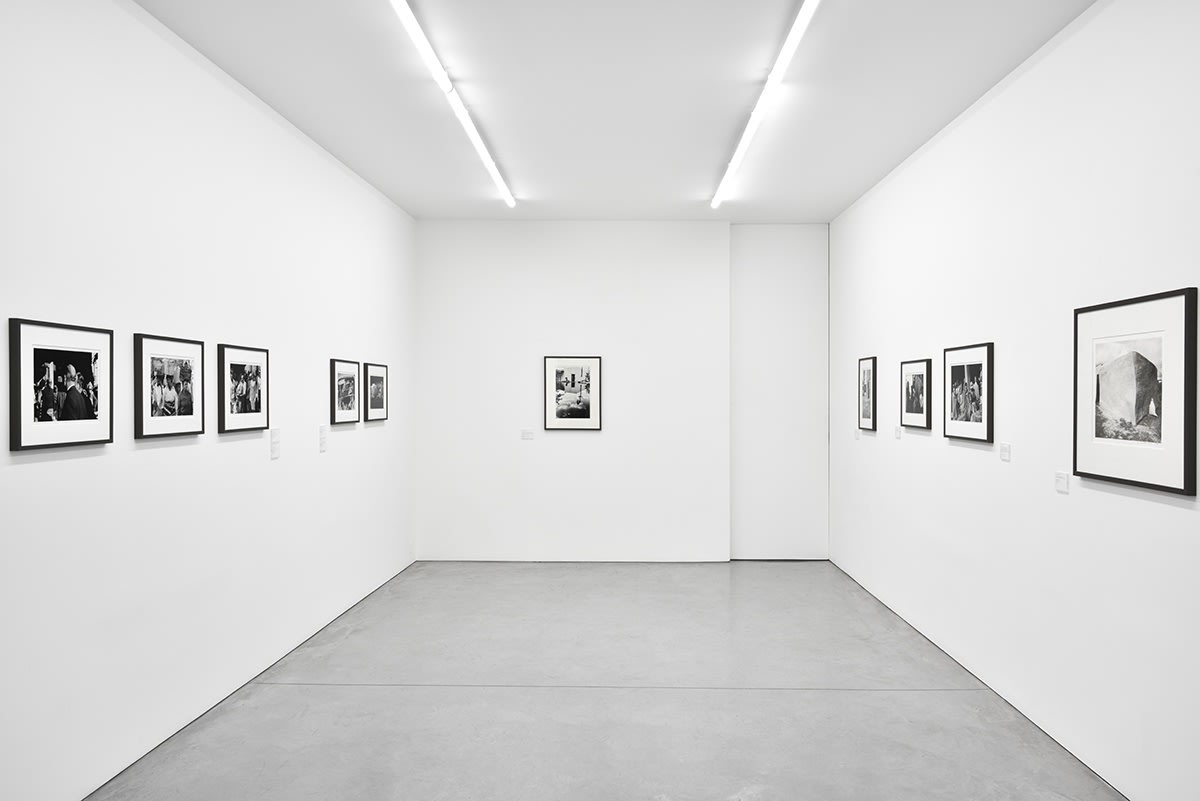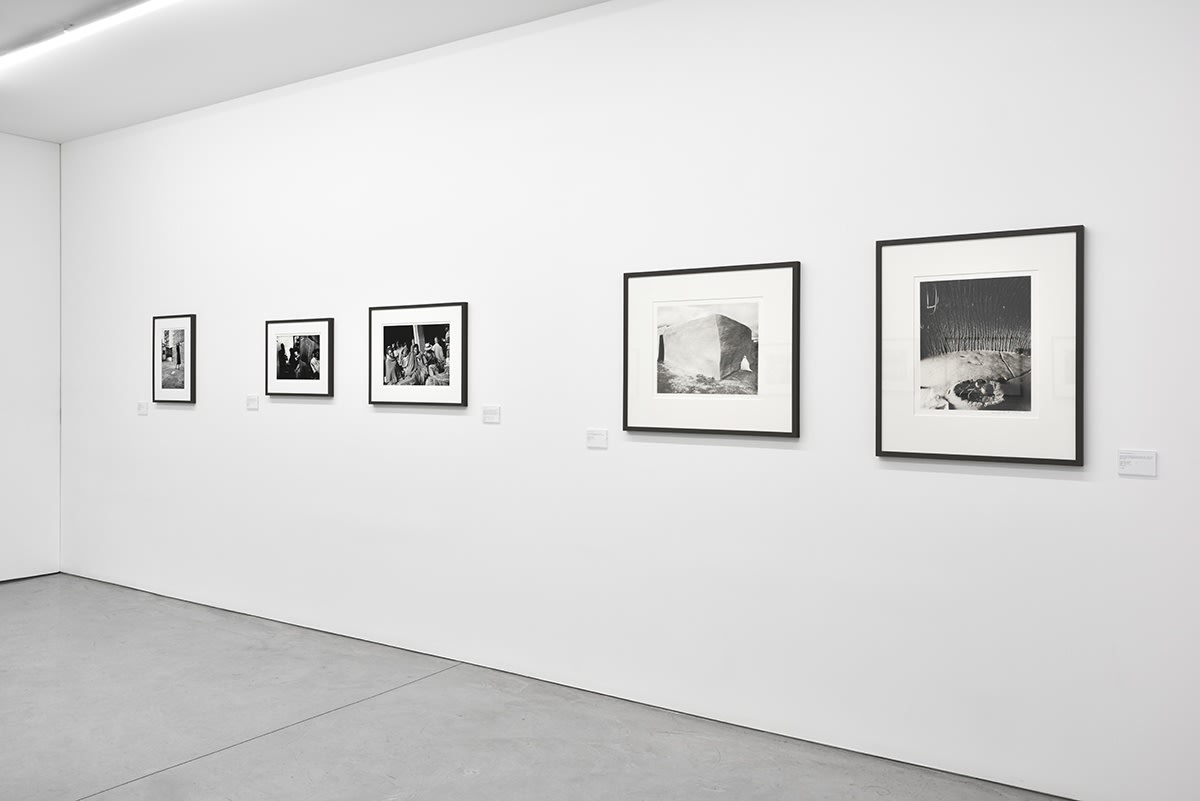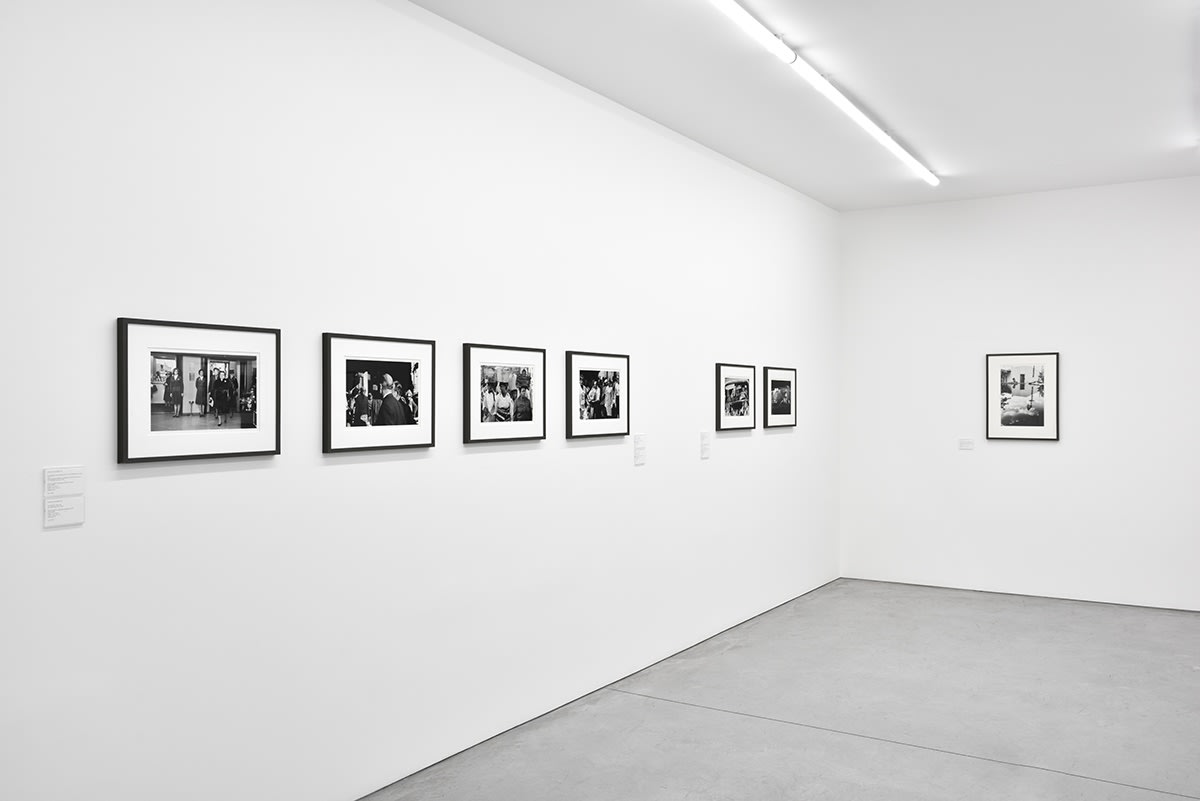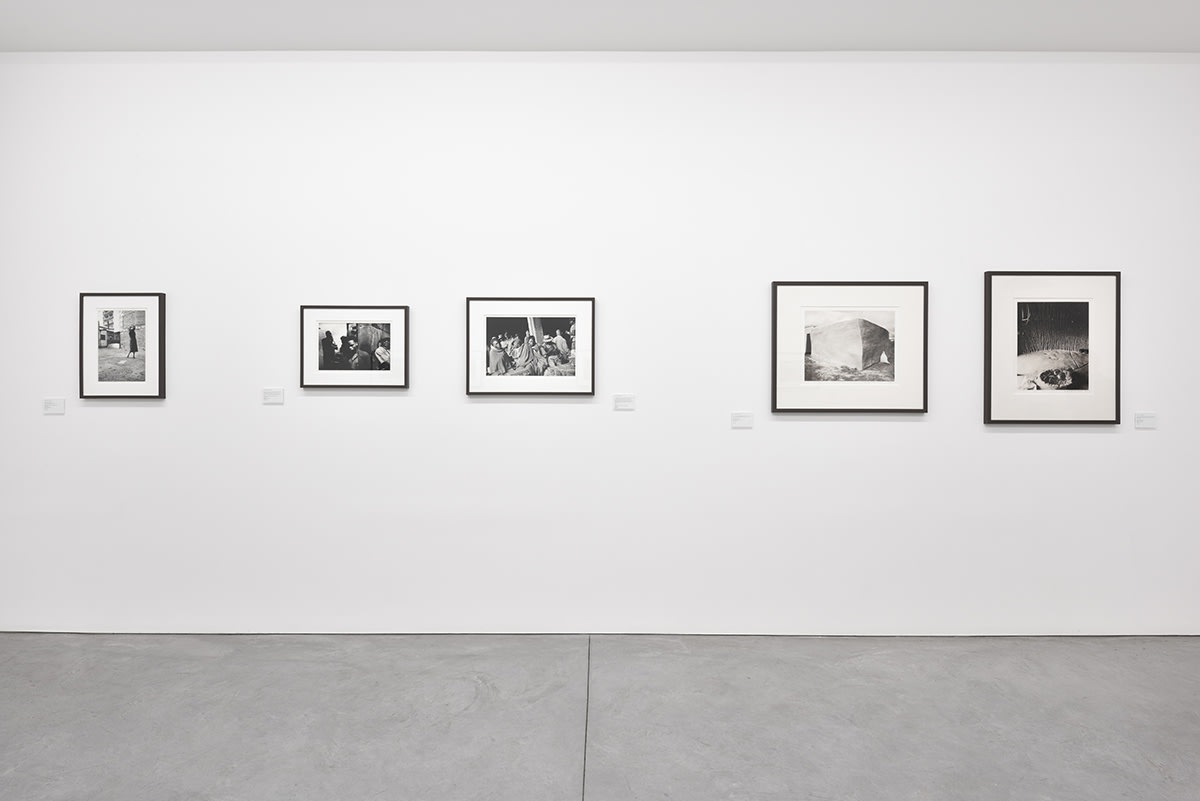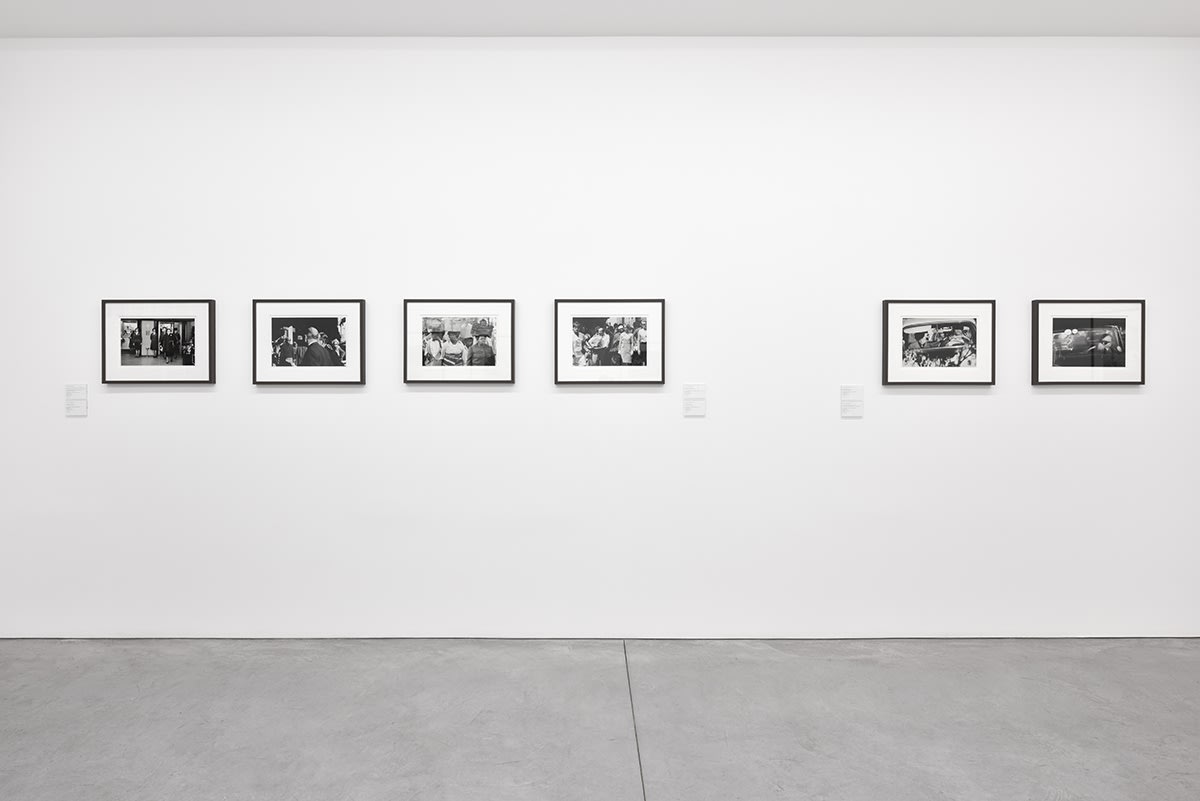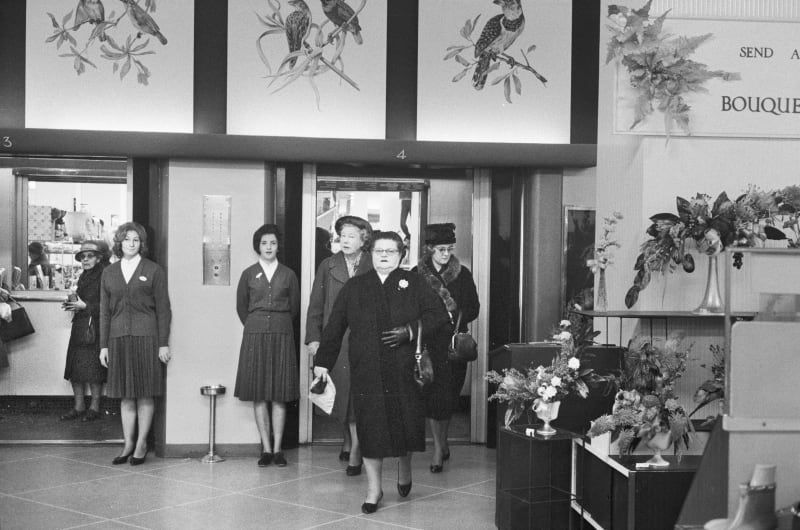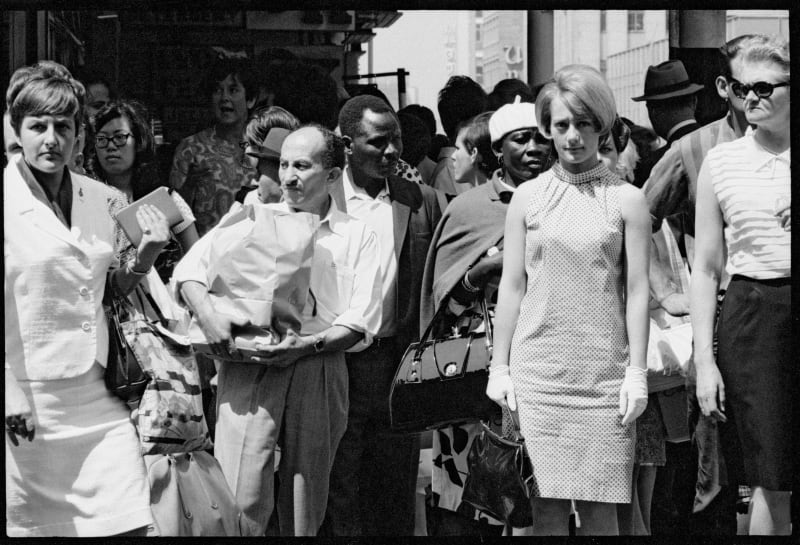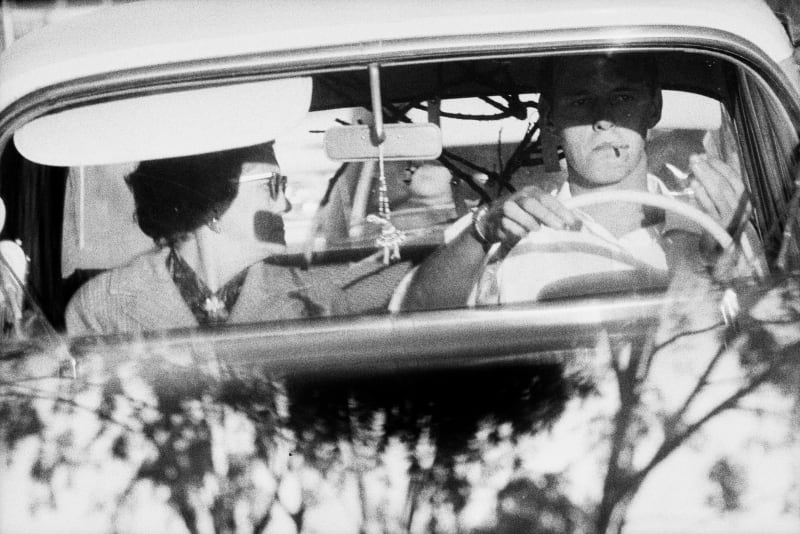Overview
On the occasion of the retrospective of his work organized by the Centre Pompidou, Marian Goodman Gallery is pleased to present a selection of photographs by David Goldblatt in its bookshop.
The black-and-white works on display are among David Goldblatt’s early photographs, most of which were taken in the 1960s in the streets of downtown Johannesburg in particular the Hillbrow neighborhood. These images portray the atmosphere of the city at a time when apartheid was in full-effect in South Africa.
David Goldblatt
20 February – 17 March 2018
Book signing with the artist: Thursday 22 February, 6:30-7:30 PM
On the occasion of the retrospective of his work organized by the Centre Pompidou between February 21 and May 13, Marian Goodman Gallery is pleased to present a selection of photographs by David Goldblatt in its bookshop. A book signing with the photographer will take place on the 22nd of February from 6:30 to 7:30PM.
The black-and-white works on display are among David Goldblatt’s early photographs, most of which were taken in the 1960s in the streets of downtown Johannesburg in particular the Hillbrow neighborhood. These images portray the atmosphere of the city at a time when apartheid was in full-effect in South Africa.
Although he feels connected to the city by a sense of belonging, Goldblatt remains critical: “Johannesburg is a fragmented city. It is not a place of smoothly integrated parts. And it has a name that does not roll easily off the tongue. Unsurprisingly, the people of its fragments, which are severely divided by class, culture and, in particular, by race, have their own names, nicknames, elisions, diminutives and linguistic transliterations for the place.”
Nevertheless, since the late 1940s, Goldblatt has not stopped crisscrossing the city, documenting its architectural, social, and demographic transformations. In a book published in 2010, entitled TJ (which is among the nicknames for Johannesburg referring to the former nomenclature for the city’s license plates), Goldblatt placed his early photographs alongside others from later decades. In the 1970s, he became interested in the disadvantaged neighborhood of Soweto as well as in affluent suburbs; in the 1980s the photographer witnessed forcible relocations under the newly passed Group Area Act. In the 1990s, his photographs attested to the breakdown of the system of racial segregation, while those in color from the 2000s highlighted new lines of tensions in the post-apartheid era.
Through his diligent attention to detail of the various national communities and to the way people shape landscapes and places, David Goldblatt is an avid observer of the complex values that have forged his country. Widely acknowledged as one of the leading South African photographers, David Goldblatt helped establish the Market Photography Workshop in Johannesburg in 1989 with the aim of transmitting visual culture and photographic education to the younger generations.
David Goldblatt was born in 1930 in Randfontein, a city located forty km away from Johannesburg. He has received numerous international awards, including the ICP Infinity Lifetime Achievement Award in 2013; the Henri Cartier-Bresson Award in 2009; the Hasselblad Award in 2006; and the Rencontres d’Arles Book Award for Particulars in 2004. Following a solo exhibition at the Museum of Modern Art (MoMA) in New York in 1998, his work has continued to be shown in other major museums worldwide. Between 2001 and 2003, the retrospective David Goldblatt: Fifty-one Years, bringing together over two hundred photographs, traveled around the United States and Europe (the AXA Gallery in New York; Museu d’Art Contemporani in Barcelona (MACBA); Witte de With—Center for Contemporary Art in Rotterdam; Centro Cultural de Belem in Lisbon; Museum of Modern Art in Oxford; Palais des Beaux-Arts in Brussels; and Lenbachhaus in Munich). Between 2008 and 2011, Intersections Intersected: The Photography of David Goldblatt was featured, among others, at the Museu Serralves in Porto, the Malmö Konsthall, and the New Museum in New York. In Paris, the Henri Cartier-Bresson Foundation showcased his project TJ in 2011, while in 2017 the Louis Vuitton Foundation devoted to his work a large section of an exhibition of the South-African contemporary art scene.
Press contact: Raphaële Coutant, raphaele@mariangoodman.com, +33 (0)1 48 04 70 52
